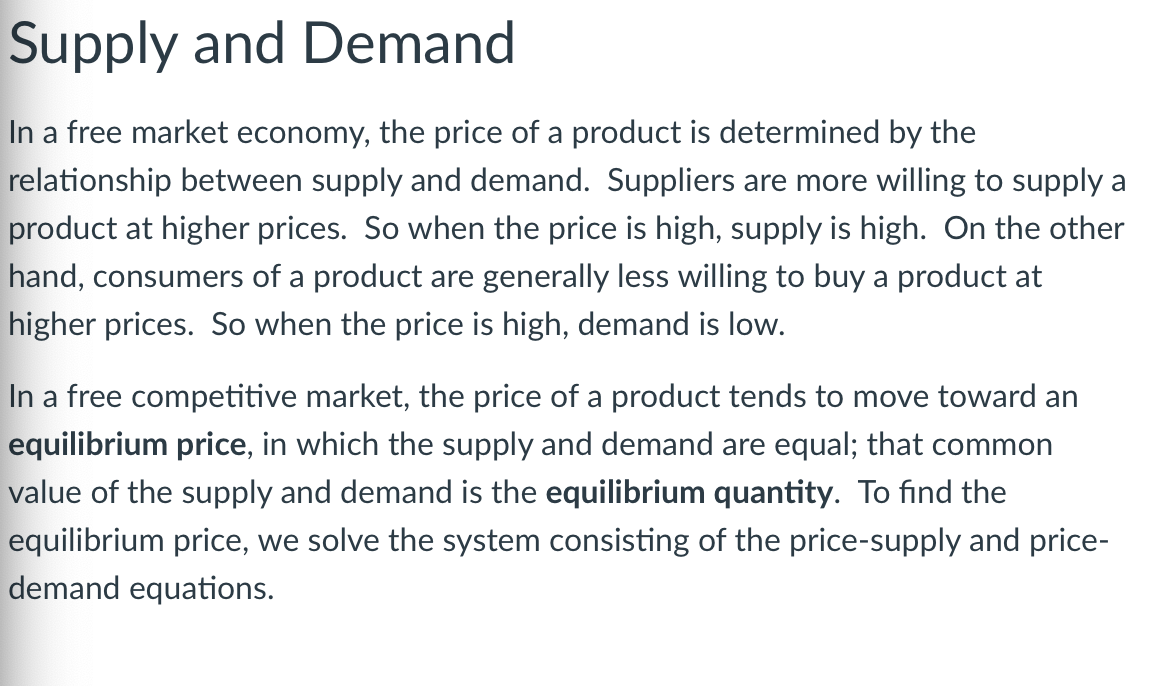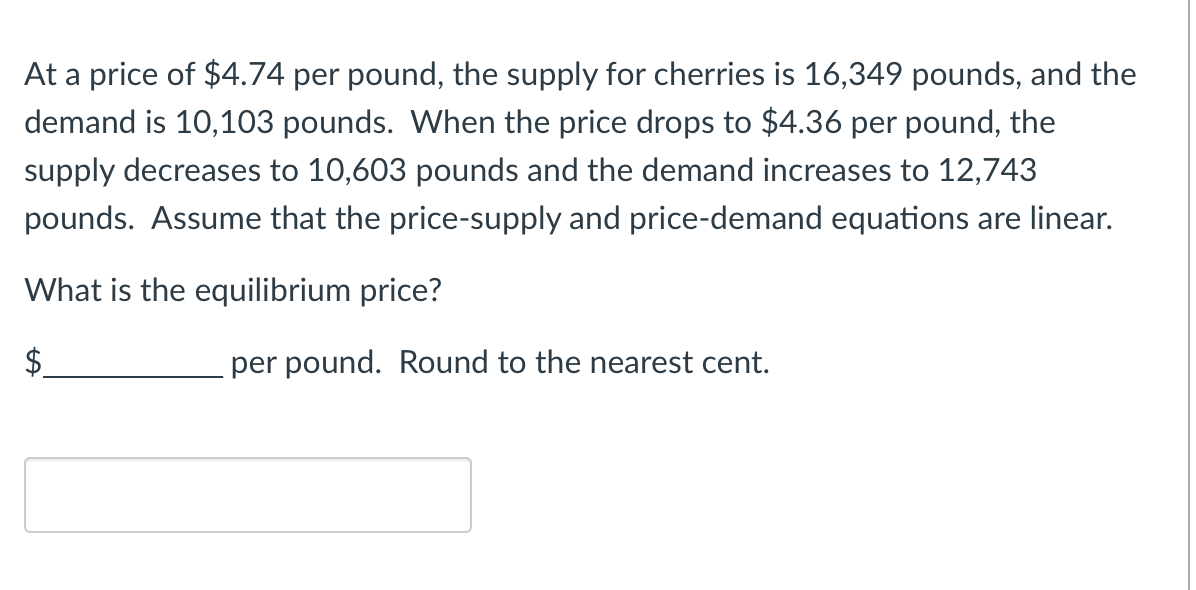Supply and Demand In a free market economy, the price of a product is determined by the relationship between supply and demand. Suppliers are more willing to supply a product at higher prices. So when the price is high, supply is high. On the other hand, consumers of a product are generally less willing to buy a product at higher prices. So when the price is high, demand is low.
Supply and Demand In a free market economy, the price of a product is determined by the relationship between supply and demand. Suppliers are more willing to supply a product at higher prices. So when the price is high, supply is high. On the other hand, consumers of a product are generally less willing to buy a product at higher prices. So when the price is high, demand is low.
Chapter4: Demand, Supply, And Market Equilibrium
Section: Chapter Questions
Problem 25P
Related questions
Question
L

Transcribed Image Text:Supply and Demand
In a free market economy, the price of a product is determined by the
relationship between supply and demand. Suppliers are more willing to supply a
product at higher prices. So when the price is high, supply is high. On the other
hand, consumers of a product are generally less willing to buy a product at
higher prices. So when the price is high, demand is low.
In a free competitive market, the price of a product tends to move toward an
equilibrium price, in which the supply and demand are equal; that common
value of the supply and demand is the equilibrium quantity. To find the
equilibrium price, we solve the system consisting of the price-supply and price-
demand equations.

Transcribed Image Text:At a price of $4.74 per pound, the supply for cherries is 16,349 pounds, and the
demand is 10,103 pounds. When the price drops to $4.36 per pound, the
supply decreases to 10,603 pounds and the demand increases to 12,743
pounds. Assume that the price-supply and price-demand equations are linear.
What is the equilibrium price?
$
per pound. Round to the nearest cent.
Expert Solution
This question has been solved!
Explore an expertly crafted, step-by-step solution for a thorough understanding of key concepts.
This is a popular solution!
Trending now
This is a popular solution!
Step by step
Solved in 2 steps with 3 images

Knowledge Booster
Learn more about
Need a deep-dive on the concept behind this application? Look no further. Learn more about this topic, economics and related others by exploring similar questions and additional content below.Recommended textbooks for you

Exploring Economics
Economics
ISBN:
9781544336329
Author:
Robert L. Sexton
Publisher:
SAGE Publications, Inc

Principles of Economics 2e
Economics
ISBN:
9781947172364
Author:
Steven A. Greenlaw; David Shapiro
Publisher:
OpenStax

Exploring Economics
Economics
ISBN:
9781544336329
Author:
Robert L. Sexton
Publisher:
SAGE Publications, Inc

Principles of Economics 2e
Economics
ISBN:
9781947172364
Author:
Steven A. Greenlaw; David Shapiro
Publisher:
OpenStax